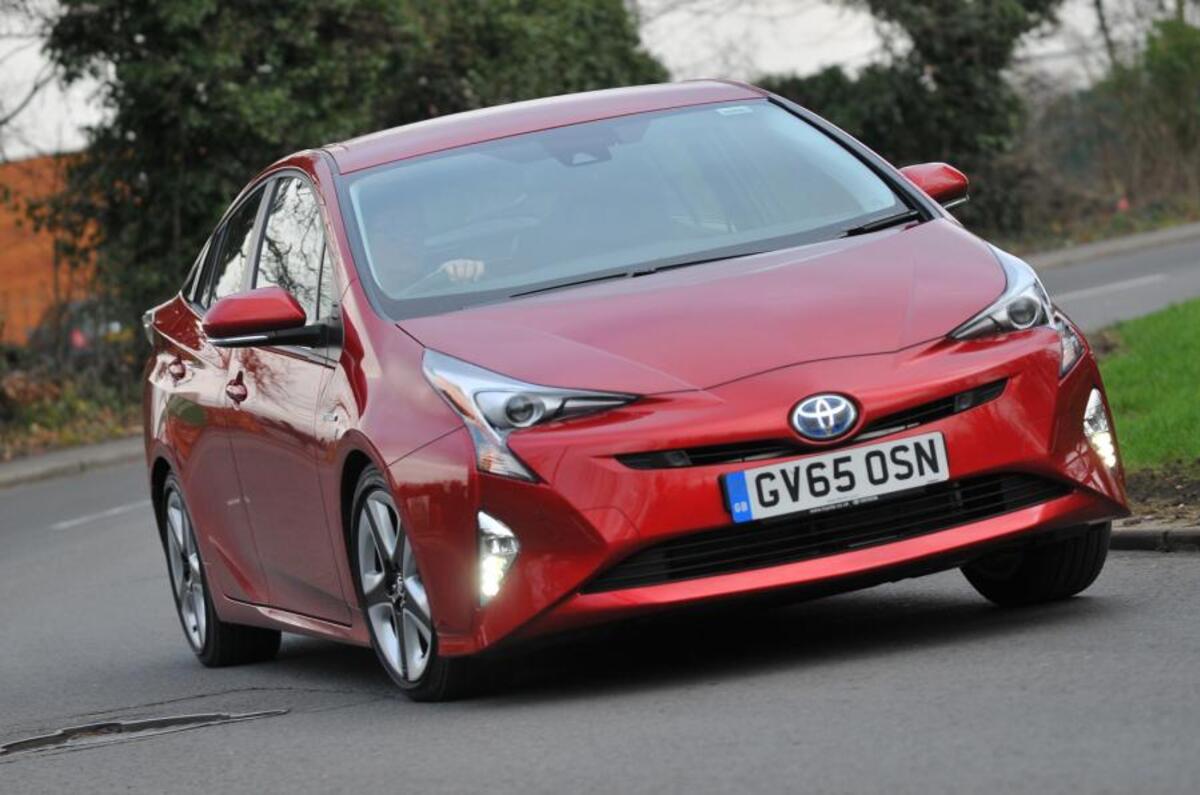New CO2 figures for the updated Toyota Prius have pushed it out of the London Congestion Charge exemption zone, which dictates that cars must produce less than an average of 75g/km CO2.
A Transport for London (TfL) spokesman confirmed to Autocar that it won't be re-evaluating existing cars, however, so the Prius, which is now listed as producing 78g/km of CO2 according to Europe's latest emissions testing procedure, will keep its free pass into the capital's Congestion Charge zone even in its latest form.
The adjusted numbers come thanks to changes to the New European Driving Cycle (NEDC) test. European regulators are now using this evolved process that adopts some parts of the Worldwide Harmonised Light Vehicle Test Procedure (WLTP), which will come into full force next year.
New WLTP and RDE fuel economy and emissions tests explained
It's a tougher test, so has edged the Prius range's official CO2 output to 78g/km for the most efficient variant on 15in wheels, representing an increase of 5g/km. Models equipped with 17in wheels now have CO2 emissions of 82g/km, up from 76g/km.
The new numbers come alongside the Prius's upgraded specs list, which includes Safety Sense driver assist technology as standard and minor visual changes.
BMW M3 F80 to be axed in August due to new emissions test
Also impacted by the 2018 test changes is the larger Prius+, which gets the same new upgrades. Its average CO2 output is now rated at 106g/km, up from 96g/km. The Excel Plus model has been discontinued “due to WLTP challenges”.
The full Prius range, the most efficient variants of which have been longstanding favourites with private-hire drivers, will be tested under the full WLTP cycle in 2019. Emissions for the most efficient model are expected to rise above 90g/km when that happens.
Autocar is awaiting confirmation from TfL as to whether the Prius and other models like it will retain their Congestion Charge exemption beyond that.
The WLTP changes have also impacted the Volkswagen Up GTI’s CO2 emissions, which were recently raised from 110g/km to 127-129g/km. On average, the test is estimated to add around 15% to a car’s emissions over the previous NEDC procedure.
More content:
Diesel hit hard as January car sales fall by 6.3%
New WLTP real-world emissions test adds 15% to Volkswagen Up GTI's official CO2 output



Join the debate
scotty5
Hybridgate?
Not dieselgate but hybridgate? Would love to see the faces of all those smug tree huggers who lecturing others on what car to buy. Bottom line, all manufacturers were at it.
It's true hwat the Toyota spokesman says - CO2 isn't the only reason for buying a car... it was for their Prius tho. Nobody ever bought Prius because of it's good looks.
catnip
scotty5 wrote:
Isn't this because of the new testing regime, though, rather than amended figures under the old system?
si73
Yeah, there is no suggestion
Yeah, there is no suggestion that the previous figures were achieved through cheating.
ridnufc
Terrible quality
However the build quality of what you could see and touch was terrible. The worst bit was when you opened and closed the windows the whole door card moved. I’m not talking a small amount, the whole door panel moved in and out when the window went up and down. It all felt really cheap and nasty, a bit like when you get a cheap Chinese version of something.
5cylinder
This article seems to suggest
5cylinder
This article seems to suggest
Leslie Brook
.
As 5cylinder says, the article is misleading. The headline leads you to believe Toyota have made changes to the Prius to push it over the limit - a massive own goal if true. The article itself however suggests that the increase in emmissions is due to a new more accurate testing regime, in which case we should applaud their honesty. I suspect other manufacurers will also be revising their figures as these new tests roll out through the industry.
bomb
This is happening all over
This is happening all over the industry and virtually all models will see realignments to emissions, all upwards. As others have said, this gives a more accurate picture of what engines have been producing all along.
Another downside, unfortunately for petrol, is that to achieve the higher standards particle filters will now appear on petrol engines too. Manufacturers that have already have fitted them have the same caveats in their brochures as for diesel engines regarding 'soot' build-up and the regeneration they require at various intervals.
Jeremy
Tweaks?
It is not tweaks to the range "including new colour paletes" which have pushed up the CO2 output of these cars - it is the new more rigourous testing regimes that have shown up the previous ones as being inadequate in real life.
Not so Pious after all?
Mini2
But...
Doesn't the Prius actually emit no CO2 when it's running below 30mph? And if it's all emissions-based still, surely that should render it exempt for most of London's city streets? At what point will this actually become an Air Quality charge rather than a Congestion Charge?
"Work hard and be nice to people"
Add your comment